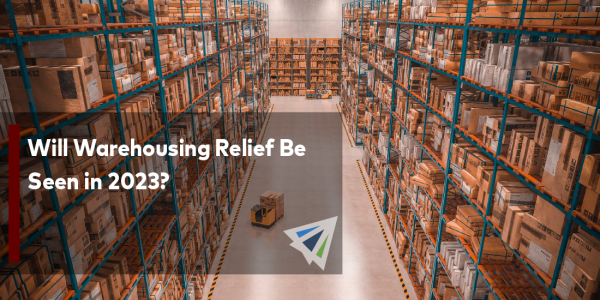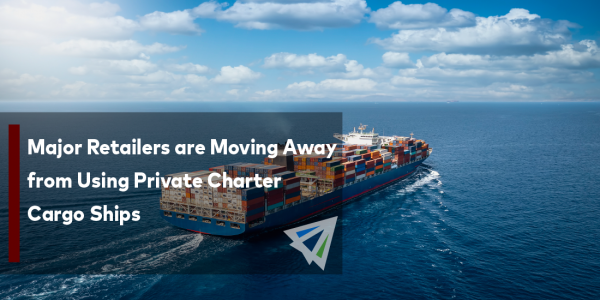Competitive Edge
January 11th, 2023
UPDATE: Gates closed at Los Angeles and Long Beach
At Los Angeles and Long Beach, gates will be closed first and second shifts on Fridays and first shift on Saturdays due to low volumes.
UPDATE: U.S. and Canada Ports – Number of Cargo Vessels at Anchor
• Vancouver: 44 Vessels at Anchor (+9)
• Savannah: 10 Vessels at Anchor (-3)
• Houston: 21 Vessels at Anchor (-4)
• San Francisco/Oakland: 9 Vessels at Anchor (+1)
• Los Angeles/Long Beach: 4 Vessels at Anchor (-4)
• New York/Newark: 6 Vessels at Anchor (+2)
• Charleston: 2 Vessels at Anchor (+1)
Note: Count taken on January 10, 2023. This count does not include vessels moored and being unloaded at port docks. Colored numbers in parentheses represents the change from last week over. Data is courtesy of MarineTraffic’s live vessel traffic map.
Have another U.S. or Canadian port you’d like us to track weekly? Let us know!
Takeaways
• U.S. West Coast: The WC remains single (in numbers of waiting vessels) and ready to mingle with shippers. Only problem–low volumes and worries from shippers due to ongoing WC labor talks.
• U.S. Gulf Coast: Houston is reportedly experiencing wait times exceeding seven days. There is also talk of the port implementing a container dwell fee February 1. Please refer to our freight news section below for more information.
• U.S. East Coast: In general, ship congestion appears minimal on the EC. Upon closer look, the real congestion exists at terminals. This bottleneck has spurred on service delays.
• Canada: Wait times reportedly exceed more than seven days at Vancouver.
IMPORT: Asia to North America (TPEB)
Recent Developments:
• Chinese New Year starts January 22.
• Contrary to pre-pandemic practices, shippers are opting to wait until after CNY to move their cargo as current inventories have satisfied current demand.
• West Coast contract negotiations between the International Longshore and Warehouse Union (ILWU) and Pacific Maritime Association (PMA) remain active. The existing labor contract between the two parties expired July 1.
Rates: Spot rates remain hovering around pre-pandemic levels.
Space: Space is open.
Capacity: Overcapacity is the current state of this trade. Blank sailings are now typical as a means from carriers to shed this excess market capacity and restore scheduling.
Equipment: Lower inbound volumes have brought relief to equipment deficits and congestion for both inland and coastal ports.
TIPS:
• Book at least two weeks prior to the ready date.
• Chinese New Year begins early this year and already low demand ahead of the holiday has led to some Chinese factories to shut down earlier than usual (as reported by local Chinese media).
• Expect blank sailings to be commonplace through Q1 2023.
IMPORT: Europe to North America (TAWB)
Rates: Barring any surges in demand, rates are expected to continue to steadily fall in 2023 as this market’s capacity increases.
Space: Space to both U.S. coasts have opened up as U.S. congestion becomes minimal.
Capacity: Larger vessels have entered the market boosting the trade lane’s capacity. This applies for both Northern Europe and Mediterranean coasts to the USEC.
Equipment: Availability has improved on both sides of the trade. Europe’s inland hubs are steadily finding balance as well.
TIPS:
• Book at least four weeks prior to ready date.
• Even as market conditions appear stabilizing, premium services (i.e., no-roll options and improved cargo reliability) should still be considered.
EXPORT: North America to Asia
Rates: Rates are stable if not slightly decreasing. They are not plummeting in this market like its inbound counterpart (Asia to North America).
Capacity: Capacity remains stable, but the market is not impregnatable to blank sailings.
Equipment: Inland and coastal ports have balanced out their equipment availability, especially the latter.
TIPS:
• Book at least three weeks prior to the time of departure.
• While market conditions are improved, remain in close contact with your providers to be aware of any potential developments, like blank sailings.
SPECIAL FEATURE: Air Freight
Demand: Demand is sitting low as we enter 2023 with volumes continuing to fall.
Capacity: Capacity is on the road to recovery as levels gradually imporve. A rebound in passenger travel towards the end of the year has helped pave this path. Certain shippers can move their cargo via passenger aircraft thus increasing overall market capacity.
Outlook: With the ocean freight market stabilizing–rates are down and congestion has improved–it is repossessing some of this lost market share it had to air freight. Demand for air freight is expected to remain muted for Q1 2023. On a side note, we can’t rule out Mother Nature’s impact on supply chains. Weather conditions can play a role in affecting ocean and inland services. While air can also be hampered by similar effects, it can also provide shippers an alternative mode to rely on.
InterlogUSA Proudly Presents...FreightFM Podcast!
What is FreightFM? It’s a podcast dedicated to offering insights into breaking news, market trends, a closer look at our company, and much more!
Keep an eye out for a new episode coming soon. In the meantime, check out past episodes.
In The News: Asia-Europe Capacity Ahead of Chinese New Year
Chinese New Year is fast approaching, factories have already started to stop production…slowly workers will begin to stop working and leave the factories…with the official holiday taking place on January 22nd and celebrations ending on February 5th.
So, what does the Asia-Europe capacity look like ahead of CNY?
Well, first, it is typical for the Asia-Europe trade to be quiet during the holidays and Chinese New Year.
Reports are showing that carriers will deploy roughly 1.9 million twenty-foot equivalent units (TEUs) of capacity on the Asia-Europe trade in January.
Blank sailings during this month are expected with Sea-Intelligence data showing around 10 percent of capacity will be blanked in January.
Freight News
Proposed Federal Rule Regarding Independent Contractor Model in Trucking
A proposed rule from the U.S. Department of Labor – if enacted – would help to end the classification of truck drivers as independent contractors, some that are opposed of the proposed rule say.
What is this proposed rule? This proposed rule (under the Fair Labor Standards Act), would make it more difficult for companies to protect the independent contractor status of the owner-operators who contract with them.
What/if any are the impacts? If this rule becomes law, it will replace the decades long dominance of the independent contractor model in trucking with an employee-driver model that some trucking companies believe is more costly and less efficient.
Additionally, this means company-employers would be responsible for covering drivers’ benefits, vehicle expenses, and other costs that independent contractors must pay out of pocket.
How does this rule differ from AB5? This proposed rule does have some similarities to the AB5 regulation, but it’s still different from AB5.
In the proposed rule Labor Department document, there’s five criteria that is not required to be met, but that the majority of the five lean into that direction, to show independent contractor status.
“The criteria involves company control over the driver; the investment made by the worker in the tool of the trade (truck); whether technology allows the company to exert control over the worker; the extent of managerial decision-making afforded to the independent driver; and whether the driver engages in “exclusivity” if they contract with the same company for years,” – per the JOC.
Will U.S. Import Volumes Fall to Their Lowest in Three Years?
The National Retail Federation anticipates that imports next month will total 1.63 million twenty-foot equivalent units (TEUS) – which would be the lowest since June 2020, which totaled at 1.61 million TEUs.
The NRF also projects imports in March to decline 2.5 percent, while April imports are projects to drop 14.5 percent – per the Journal of Commerce. Now these are just projections, so it’s still unclear on whether these projections will come true.
Port Congestion Outlook in 2023?
Port congestion this year appears to have a more optimistic outlook than prior years.
While consumers are still spending and volumes are at a substantial amount, congestion is not being seen at the docks and ships that are waiting to unload – which was a key issue this time last year.
Now, that’s not to say there won’t be port congestion, as that’s a relevant part of the supply chain. What we think is it won’t be as severe as the prior couple of years.
One uncertainty that certainly still looms is the outcome of the contract negotiations between the International Longshore and Warehouse Union and terminal operators. Talks have been going on since May 2022.
Missed Today's Webinar? We Have You Covered!
Sign Up for Next Month's Webinar
Our next webinar will be on Wednesday, February 15th!
Keep an eye out for an announcement on topics we’ll be discussing next webinar and potential special guests!
We would like to hear from you. If you have any questions or topics you would like our experts to discuss in future webinars, please let us know!
Interlog  Insights
Insights
In last week’s newsletter, we recapped the turbulence that was air freight in 2022.
Additionally, we discussed how Union Pacific lifted storage penalty cap fees, Port Houston will implement dwell fee on February 1st, and more!
Stay tuned this Friday for any updates regarding those topics, as well as new insights.
Sign up for our
industry answers
Our team works to provide valuable, unique, and relevant content to assist you in finding solutions. Sign up now.

